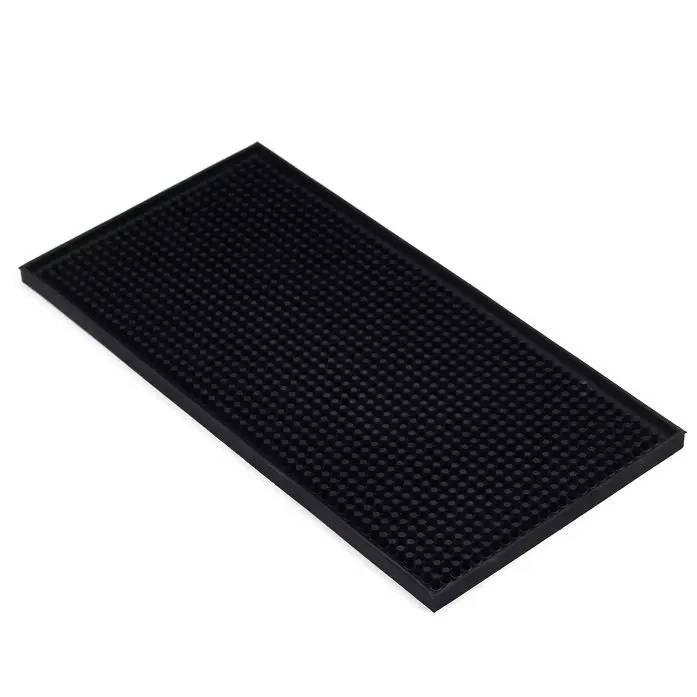Making cocktails requires special tools called bar stock. The number of tools depends on the tasks and the skill level of the bartender. The article contains a brief description of the main elements and will help beginners navigate when completing a home bar: what to buy first, and what you can wait with until the next paycheck.
Attention! The division into mandatory and optional equipment is conditional, because even a shaker can be replaced with a liter glass jar with holes in the lid, and pour the finished cocktail into a tea mug. But between the banal mixing of alcohol-containing liquids and the preparation of cocktails, there is a difference in the approach to the process – for the bartender it is important not only to observe the proportions and technology of the recipe, but also to do it beautifully, turning the whole process into a show. It is difficult to achieve entertainment without the right tools.
Mandatory bar stock
1. Shaker (from English shake – “shake”) – a container designed to mix ingredients (often with different densities). There are two types of shakers:
Классический (European, continental or cobbler) – consists of three metal elements: a glass or flask, a lid (cap) and a filter in the form of a strainer mounted in the lid.
The design has the advantage of being easy to use, but there are a number of disadvantages as well. The first – under the influence of ice, the metal quickly cools, as a result the removable parts “stick” to each other and it can be difficult to separate them at the right time. The second – in a classic shaker, the ice melts faster, since the components are poured on top of the ice, because of this, if you shake it for a long time, the cocktail may turn out to be watery.

Boston (American) shaker – the choice of professionals, consists of two metal or glass mixing glasses that are stacked on top of each other. With a certain skill, making cocktails with a Boston shaker is faster than a classic one. The second advantage is that the appearance of water in the cocktail due to the melting of ice is practically excluded, since the ingredients are in a glass without ice before shaking.
The disadvantage is that the Boston shaker can only be used with additional tools: a strainer (strainer) and a bar spoon. It also requires at least a little preparation.
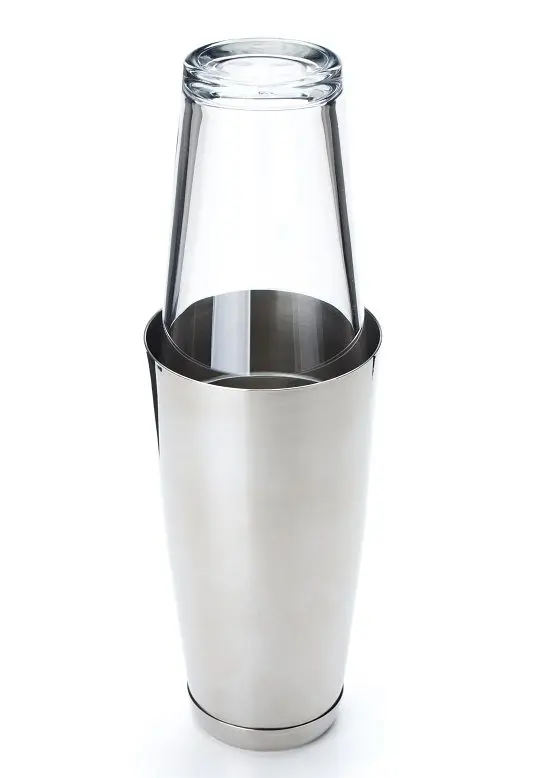
If you only plan to make a few cocktails a week, then for a home bar it is better to purchase a classic shaker that is easier to use and looks spectacular. Boston is more suitable for professionals.
2. Glasses and glasses. In functional terms, these are two different types of bar equipment.
Bar (mixing) glasses are needed for mixing ingredients that go well with each other, that is, they have almost the same density, so a shaker is not required. The second purpose is to cool the finished cocktail.
Bar glasses differ in material (metal, glass or plastic), volume (from 350 to 800 ml), shape and cut. The last characteristic affects only the appearance.
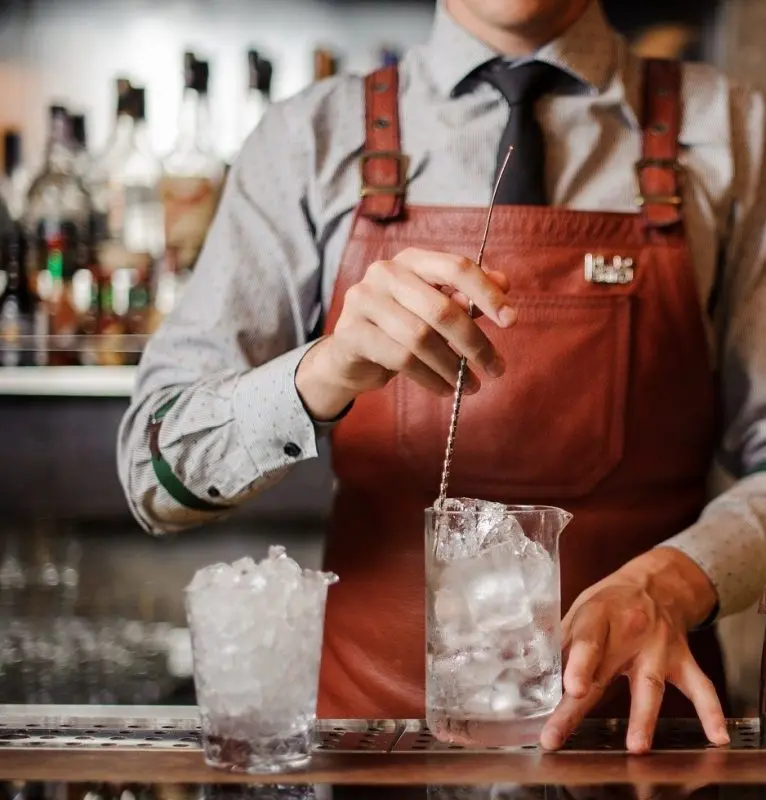
Glasses are used to serve cocktails. In a professional environment, each group of cocktails has its own glass of unique shape and volume. At home, they usually get by with a few of the most “traveling” types: a shot glass, a rock, a highball and a cocktail glass (martini glass).

3. Measuring cup (mernik or jigger). In the classic American version, it is a cone-shaped container made of stainless steel with a volume of 40 ml with notches inside. Allows you to add ingredients, keeping the proportions of the recipe accurate to the milliliter.
Most modern bartenders have abandoned the classic jigger, preferring an alternative with two cone-shaped containers of different volumes (usually one twice as large as the other), which are connected by bottoms. The larger part of the measuring cup is called a jigger, and the smaller part is called a pony.
Measuring cups differ in shape and volume, the most popular options are 40 x 20 ml, 50 x 25 ml and 30 x 60 ml. It is desirable that there are notches inside with a certain step (5 or 10 ml), showing the volume of liquid.
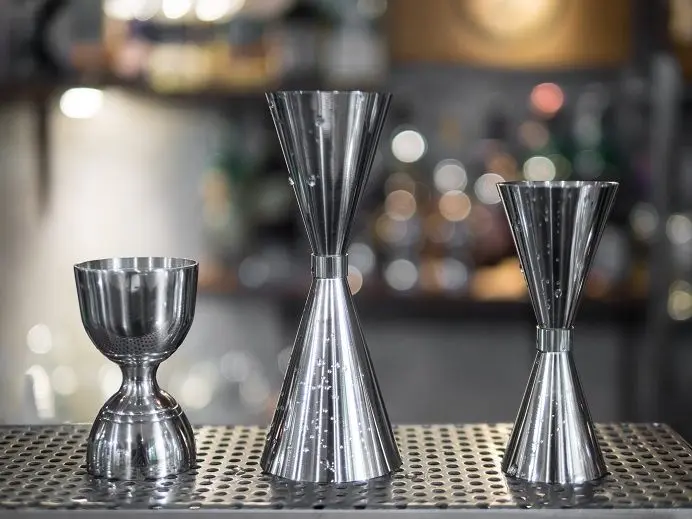
With experience, the bartender’s eye becomes more accurate and there is no need for a jigger. True, the owners of some establishments force even professionals to use measuring cups so that customers can see that they are being poured the correct amount of alcohol into a cocktail and not being deceived.
4. Bar spoon. Needed for mixing ingredients in a mixing glass, but often performs several additional functions. Outwardly, it looks like an ordinary teaspoon, only with a long handle (20-50 cm), at the back end of which there can be a “pestle” that replaces a muddler, or a fork for convenient work with lemon, zest, fruits and berries when decorating a cocktail. One bar spoon holds 5 grams of a substance or 5 ml of liquid. This is very convenient when measuring the amount of sugar, syrup or honey.
In its most practical design, the bar spoon has a twisted heeled handle for stacking layered cocktails. The spoon is turned over and the ingredients are slowly poured over the twisted part of the handle, while the “heel” barely touches the layer of liquid in the glass.

Professionals usually have several different bar spoons. For a home bar, one is enough to make layered cocktails.
Optional bar equipment
5. Strainer (bar strainer). Needed to separate the ice. It works on the principle of a kitchen sieve, but has a different shape. This is a round stainless steel plate with a spiral (spring) on the edges.
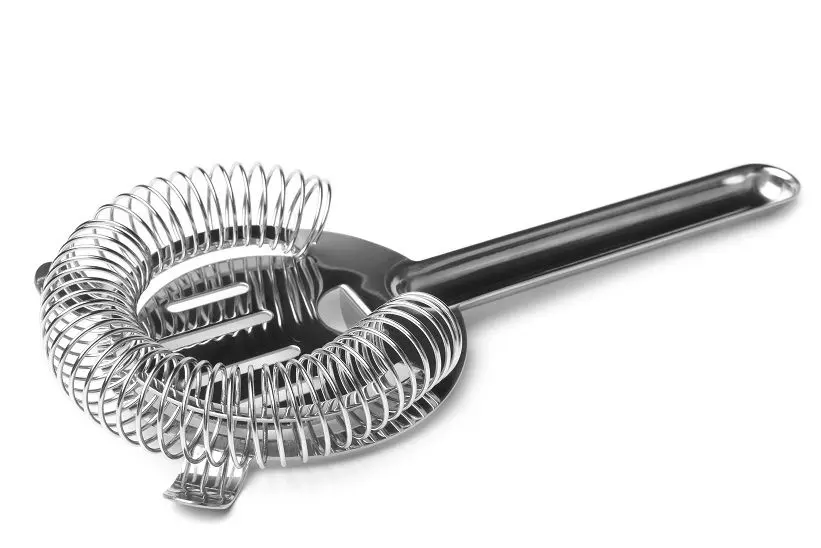
A strainer is required only for a Boston shaker.
A similar device is fine or double strainer – a small, tea-like strainer, which is used to separate the remains of crushed ice and pulp in cocktails with freshly squeezed juice or fruit.
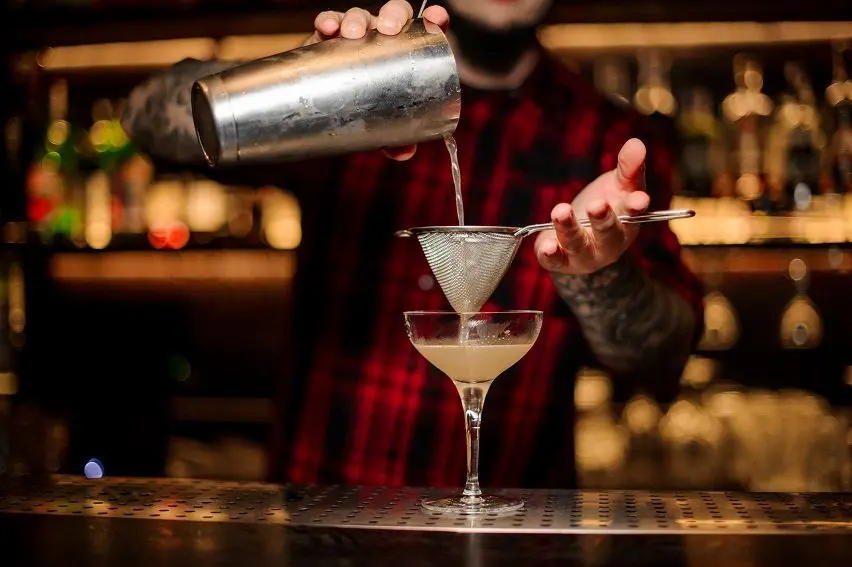
6. Madler. Required if you need to knead one of the cocktail ingredients, such as mint, apple or lemon. Basically, muddlers are made of wood, plastic and stainless steel. Classic length – 19 cm.
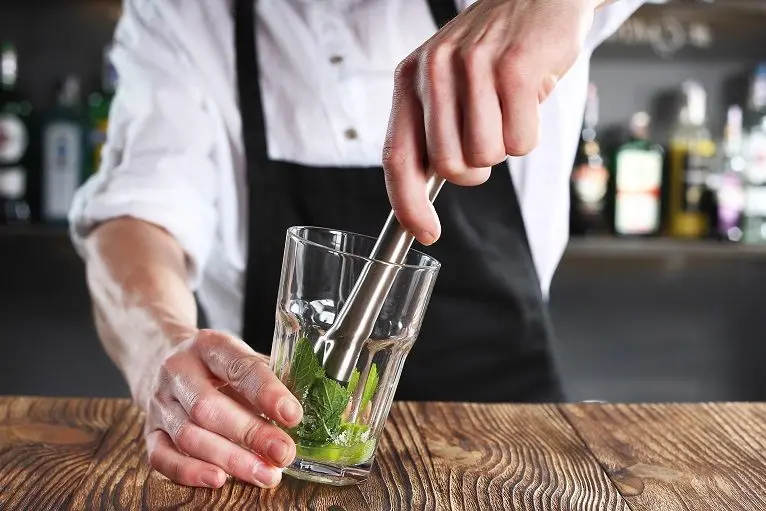
If the pulp has a fibrous structure (ginger, apple), then it is better to use a device with a smooth pressing part, since the cloves at the end quickly clog and take time to clean.
7. Bar geyser – a special cap for bottles that allows you to pour alcoholic beverages and other liquids in a uniform jet, controlling the speed. The wide part of the geyser is equal to the diameter of the neck of the bottle, and the thickness of the jet depends on the width of the spout. Dispensers have a thin tube and a hole for supplying air to the bottle, blocking which regulates the pouring speed.
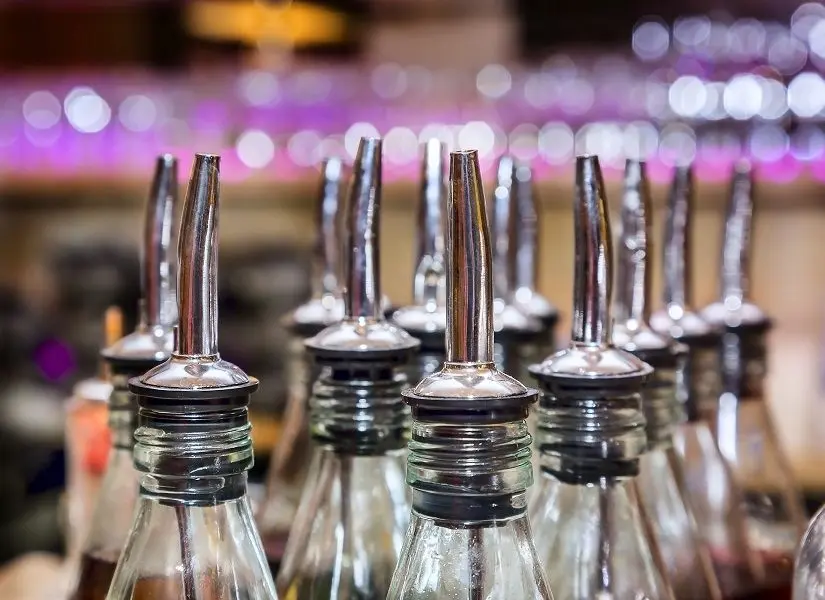
Bar geysers are installed on glass and plastic bottles, while air does not get inside and the liquid does not evaporate, so a cork or cap is not required.
8. Corkscrew (narzannik, sommelier’s knife). It is a device for extracting cork and silicone plugs. It differs from other models of corkscrews by the presence of a knife for cutting the foil on the neck of the bottle and a support knee for quick removal of the cork with minimal effort.
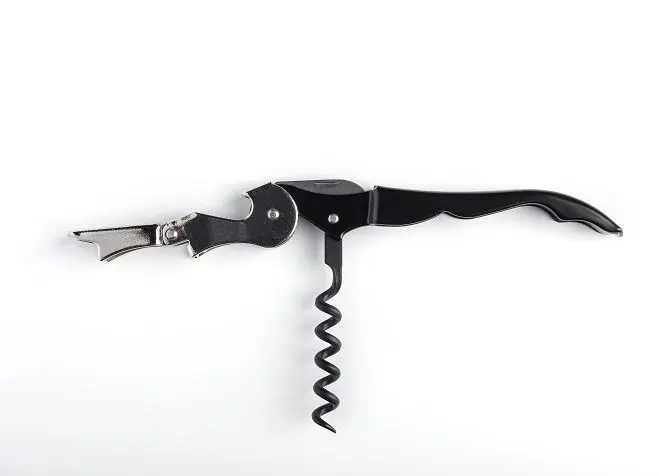
9. Bar knife. Most often used for chopping and slicing fruit, as well as peeling. Depending on the model and shape of the blade, it may perform other functions. First of all, the bar knife differs from the usual kitchen “brother” in its beautiful appearance.

10. Squeezer. Allows you to easily and quickly squeeze the juice from fruit cut into slices. Works like a garlic press. Squeezers are made of stainless steel and plastic, as these materials are not afraid of acid in fruits.
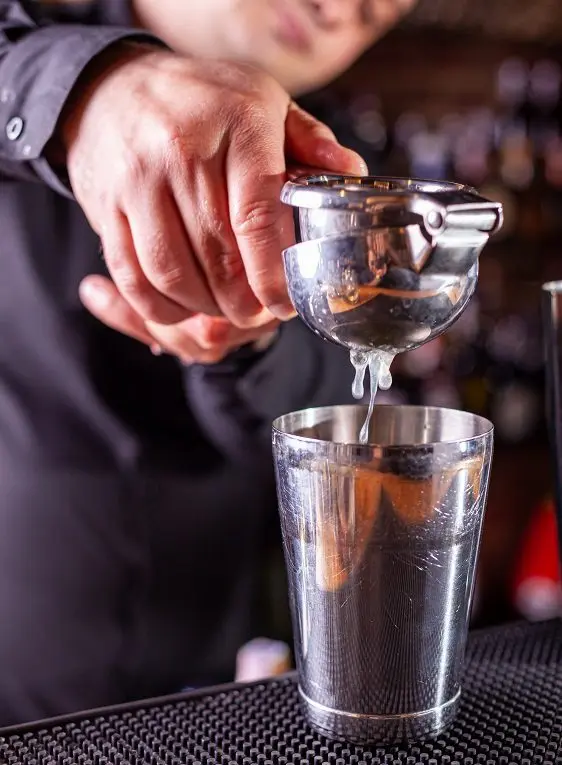
11. Rimmer. A device for quickly creating a sugar or salt rim on the edge of a glass. This is a container with three compartments, salt is poured into the first, sugar is poured into the second, and the third is filled with lemon or lime juice. First, the bartender dips the glass into the juice, and then into the bulk.
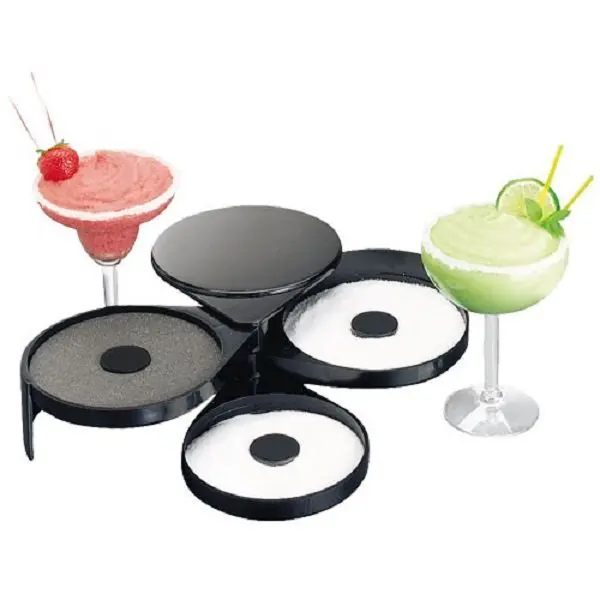
12. Bucket, scoop and ice tongs. Proper ice buckets (ice-buckets) work like a thermos, as a result, the cubes do not melt longer even if they are not in the refrigerator. Filling glasses with ice using tongs or a scoop (the choice of tool depends on the degree of ice crushing) is very convenient.
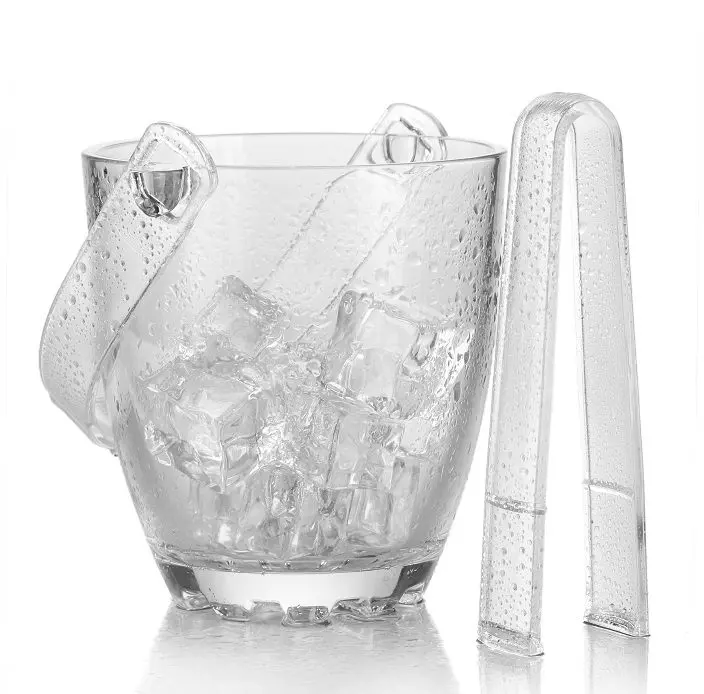
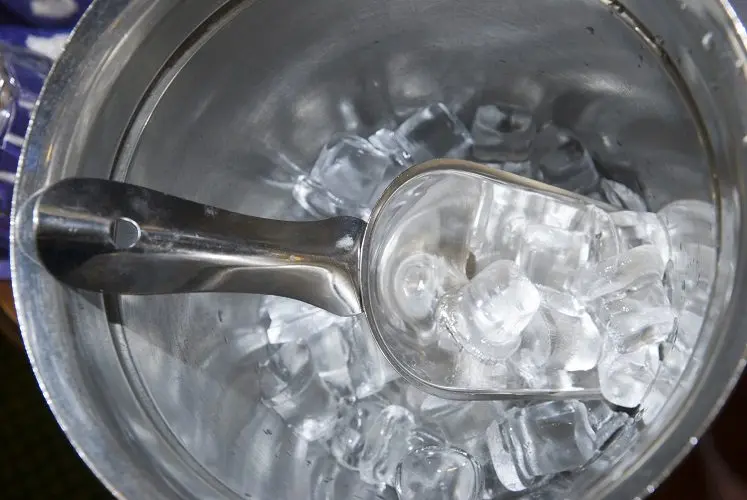
13. Siphon for cream (dispenser, creamer). It is considered a professional tool. Needed to quickly fill a glass with a cocktail or a cup of coffee with whipped cream. A screw-on canister of carbon dioxide pressurizes the cream flask. It is enough to press the handle of the dispenser to get a portion of cream.
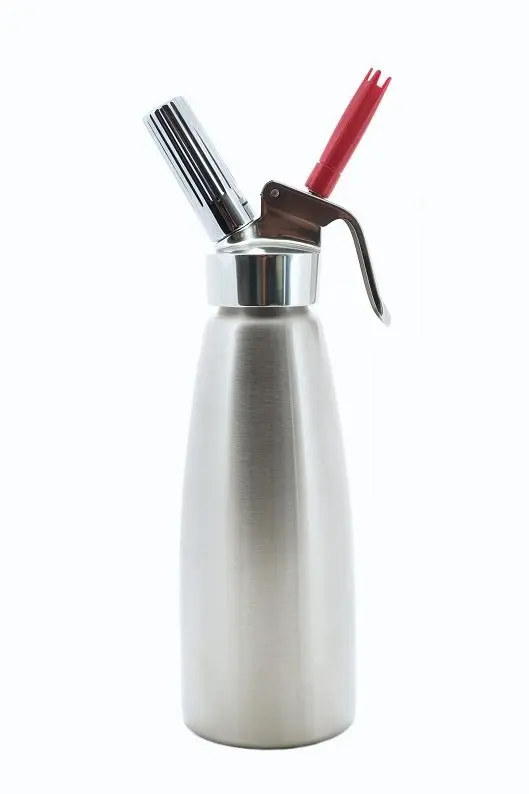
14. Bar mat. Made of rubber or plastic mesh. Prevents sliding of objects on the surface. Spikes allow accidentally spilled liquid to flow down freely and evaporate. The rug does not take up much space and is easy to clean.
